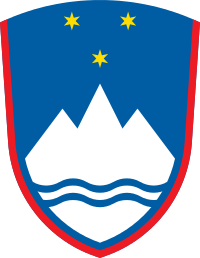Weissenfels Castle
Coordinates: 46°31′21.24″N 13°42′52.47″E / 46.5225667°N 13.7145750°E

Weissenfels Castle ("White Cliff Castle;" German: Schloss Weissenfels, Italian: Castello Fusine, Slovene: Grad Bela peč) is a castle ruin above the settlement of Bela Peč (German: Weissenfels, Italian: Fusine in Valromana), near Rateče in the extreme northwest corner of Slovenia. The ruins are located almost exactly on the tripoint (5,7 km from it) between Slovenia, Austria, and Italy, lying just barely (46°30'6.79" N 13°38'41.65" E) on the Italian side of the border.
History

The castle was ordered built after 1431 by Frederik II of Celje, as a well-fortified stronghold atop a 1,120 m hill of the same name. The Counts of Celje had controlled the area—a nexus of important trade routes between Friuli, Carinthia, and the Upper Sava Valley—since 1418, having inherited it from the Counts of Ortenburg.
In addition to its primary function of defending the house's area landholdings, the castle served to protect the iron-ore mines and smelting furnaces of the upper Sava Valley, a sovereign possession of the Counts and a jealously guarded one because the industry was at the time normally a royal prerogative.
After the extinction of the house of Celje in 1456, the castle and associated lordship were inherited by the Habsburgs, who managed the estate via a succession of ministeriales. During the 16th century, its owners were the Bucelleni family of Jesenice, also active in the iron industry. The castle's last owners were the Kos family, landlords of numerous area settlements, including Bela Peč, Rateče, Podkoren, Kranjska Gora, Gozd Martuljek, Dovje, Hrušica, Planina pod Golico, Jesenice, Javornik, Koroška Bela, Potoki and parts of Žirovnica, Zabreznica, and Doslovče.
The castle was abandoned in the 18th century and left to decay. The impressive ruins are nonetheless indicative of its former might.
See also
Sources
- Jakič, Ivan: "All Slovene Castles" (Vsi slovenski gradovi), DZS, 1999, ISBN 86-341-2325-1
